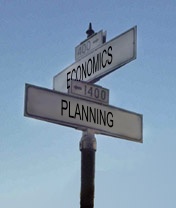A report by the Brookings Institution and Boston think tank MassINC, Reconnecting Massachusetts Gateway Cities, suggests that the old mill towns could provide the Boston area's high-tech employers with needed workers, affordable housing and a model for growth that doesn't involve suburban sprawl.
Massachusetts shows how unevenly distributed a high-tech boom can be. According to the Brookings and MassINC report, the Boston area's share of the state's technology companies has grown to 60% from 53% in 1994. The area added 467,000 jobs between 1970 and 2005. Today, it is home to 40% of the state's population and 50% of its private-sector jobs and generates 60% of the state's payroll.

During the same period, 11 Massachusetts mill towns or gateway cities -- Brockton, Fall River, Fitchburg, Haverhill, Holyoke, Lawrence, Lowell, New Bedford, Pittsfield, Springfield and Worcester -- lost more than 11,000 jobs. Today they account for 15% of the state's population, 13% of its private jobs and less than 10% of its public payroll.
In addition to the uneven distribution of high-tech jobs, the wealth gap is correspondingly large. The mill towns, which have large numbers of immigrants and minorities, account for 30% of the state's residents living in poverty, according to the report. These trends represent "a serious threat to the overall economic competitiveness of Massachusetts" according to the report.
Brookings and MassINC acknowledge transforming the mill towns into realistic alternatives for high-tech employers will be a challenge. But the report suggests the state needs to try to make the mill towns more economically attractive. Among its recommendations: linking state aid to local governments' cost-control efforts, establishing data systems to track local spending, making city budgets more transparent, and developing public-private partnerships.
Haverhill, Massachusetts, an industrial town 35 miles north of Boston is already trying to capitalize on its location and affordability. The median home price is $266,000, 38% less than in Greater Boston and rezoning has allowed for the redevelopment of shuttered factories into residential loft space, as well as the city's first big-box retail development. The town has good rail and road connections to Greater Boston and is positioning itself to attract biotechnology and pharmaceutical companies. It will be interesting to see if these mill towns will be successful in luring high-tech industries or if they will continue to lose jobs to the Boston area.

No comments:
Post a Comment